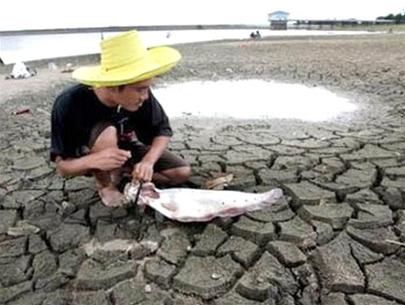El Nino goes, La Nina comes
The El Nino phenomenon, which started in 2006, ended the past few weeks. However, it is not good news because almost immediately, its ' twin sister ' La Nina has appeared.
The National Oceanic and Atmospheric Administration (NOAA) experts say it is found that the temperature of the sea water is colder than normal in the equatorial Pacific region, a typical sign of La Nina. In addition to changes in atmospheric and wind pressures, La Nina can affect global climate.
NOAA confirmed that it was not possible to assess the impact of La Nina. Usually this weather phenomenon will cause a lot of storms on the Atlantic Ocean but reduce the risk of storms in the Pacific. In the US, La Nina will cause hot and dry weather in the southern region which is drying up due to drought. According to meteorology professor Andrew Weaver of Victoria University (Canada), depending on the region La Nina will bring benefits or cause destruction.
Typically, La Nina phenomenon begins to form from March to June every year, and has the strongest influence at the end of the year until February next year.

El Nino causes drought in Thailand (Photo: Reuters)
HIEU TRUNG
- What is La Nina phenomenon?
- La Nina is coming back
- El Nino is about to end in the Caribbean
- The origin of the term El nino
- WMO: La Nina's weather phenomenon is about to end
- 'The phenomenon of La Nina will end globally
- Earth warms weaken El Nino's function to prevent storms
- NASA: We are experiencing the peak of El Nino
- El Nino 2015 looks strange with the peak of 1997
- La Nina phenomenon continues to last until early 2008
- La Nina arrived early
- La Nina may be the cause of a pandemic
 Is the magnetic North Pole shift dangerous to humanity?
Is the magnetic North Pole shift dangerous to humanity? Washington legalizes the recycling of human bodies into fertilizer
Washington legalizes the recycling of human bodies into fertilizer Lightning stone - the mysterious guest
Lightning stone - the mysterious guest Stunned by the mysterious sunset, strange appearance
Stunned by the mysterious sunset, strange appearance